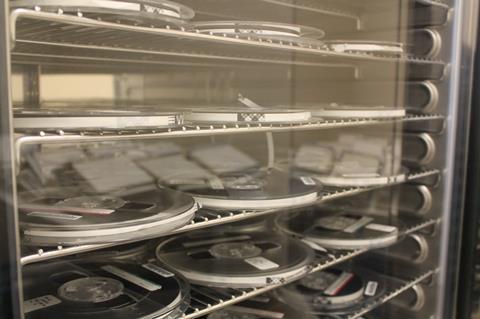Heidi Shakespeare, CEO of Memnon, looks at the key areas for the sector over the next 12 months

As we approach 2025, archive content owners face significant challenges: rapid tape degradation, the obsolescence of playback machines, and a dwindling number of skilled professionals to operate them. With some assets deteriorating faster than they can be preserved and digitised, we’ve reached a critical juncture. Without urgent action, we risk losing some of our most culturally and historically significant content.
Throughout 2024, these challenges have gained increasing attention at trade shows, among our peers, and by major film studios and broadcasters. However, insufficient action is being taken to prevent the loss of valuable assets.
Media organisations face numerous challenges when attempting to plan, preserve and digitise their archive content stored on physical media. One key challenge is the vast amount of content stored on legacy formats such as tape or disc, which demand considerable time and expertise to process. In addition, budget constraints, technical issues, and a shortage of skilled professionals further hinder the process. It’s critical that organisations recognise the value of their archival content. While identifying monetisation opportunities, setting preservation priorities, and communicating the business benefits of these initiatives can be time consuming, they are essential for safeguarding content and storytelling heritage as well as unlocking future revenue opportunities.
This leads us to another major challenge; industry-wide education is desperately needed to empower organisations to identify which content formats are at risk and need to be preserved to avoid loss. The issue of asset deterioration will continue to receive wider recognition and grow in importance throughout 2025.
One of the most significant changes we’ve seen this year has been the rise of cloud technology and the shift in the industry’s perception of it. This shift has positively impacted the archival sector by increasing the level of accessibility to preserved assets. For organisations with digitised content, the evolution of the cloud offering has helped alleviate previous reservations around it; high costs, slow speeds and potential security breaches are no longer perceived as a major threat. The advancement of cloud technology means that accessing archived content has become faster and more efficient, especially with the introduction of machine learning and intelligent retrieval features.
The development of AI technology for the archiving industry is proving to be a game-changer. The technology is transforming content and metadata management, allowing end-users to retrieve archive assets through visual AI search and facilitating a wide range of applications. It’s also enabling organisations to quickly and easily identify media assets with monetisation potential. Beyond search and discovery, AI-powered automation features such as in-picture image recognition, transcription, translation, and file trimming continue to streamline the content curation process.
As AI becomes increasingly integrated into these workflows it will require a shift in skill sets with operators becoming more adept at working alongside the technology. However, key to note here is that they’ll work with the technology, not be replaced by it. AI still has its limitations, in particular its inability to understand context and unreliable decision-making capabilities. Human supervision and operation will remain critical to ensure consistent accuracy and overall effectiveness of the archiving process.
As we enter 2025, the continued technological advancements will play a significant role in supporting archivists by increasing efficiency and reducing manual tasks. Similarly, for media organisations, innovation in automation and machine learning technology will streamline the digitisation and preservation process, making content more easily accessible once preserved. Additionally, technology such as the cloud will provide a significant reduction in costs. For example, using cloud-based storage to temporarily house content whilst waiting for approvals or delivery to CDNs, reducing the need for expensive enterprise storage systems.
However, more education is needed and this is what we, as an industry, should champion in the coming years. Knowledge sharing is vital, not only on the formats most at risk of degradation but also concerning machine obsolescence and the widening skills gap that is reducing the number of specialists capable of maintaining them. A shrinking pool of specialists and engineers can lead to longer delays in preserving assets that may already be nearing the end of life. That’s why it’s crucial that the industry addresses these challenges moving forward.

Heidi Shakespeare is CEO of Memnon





No comments yet